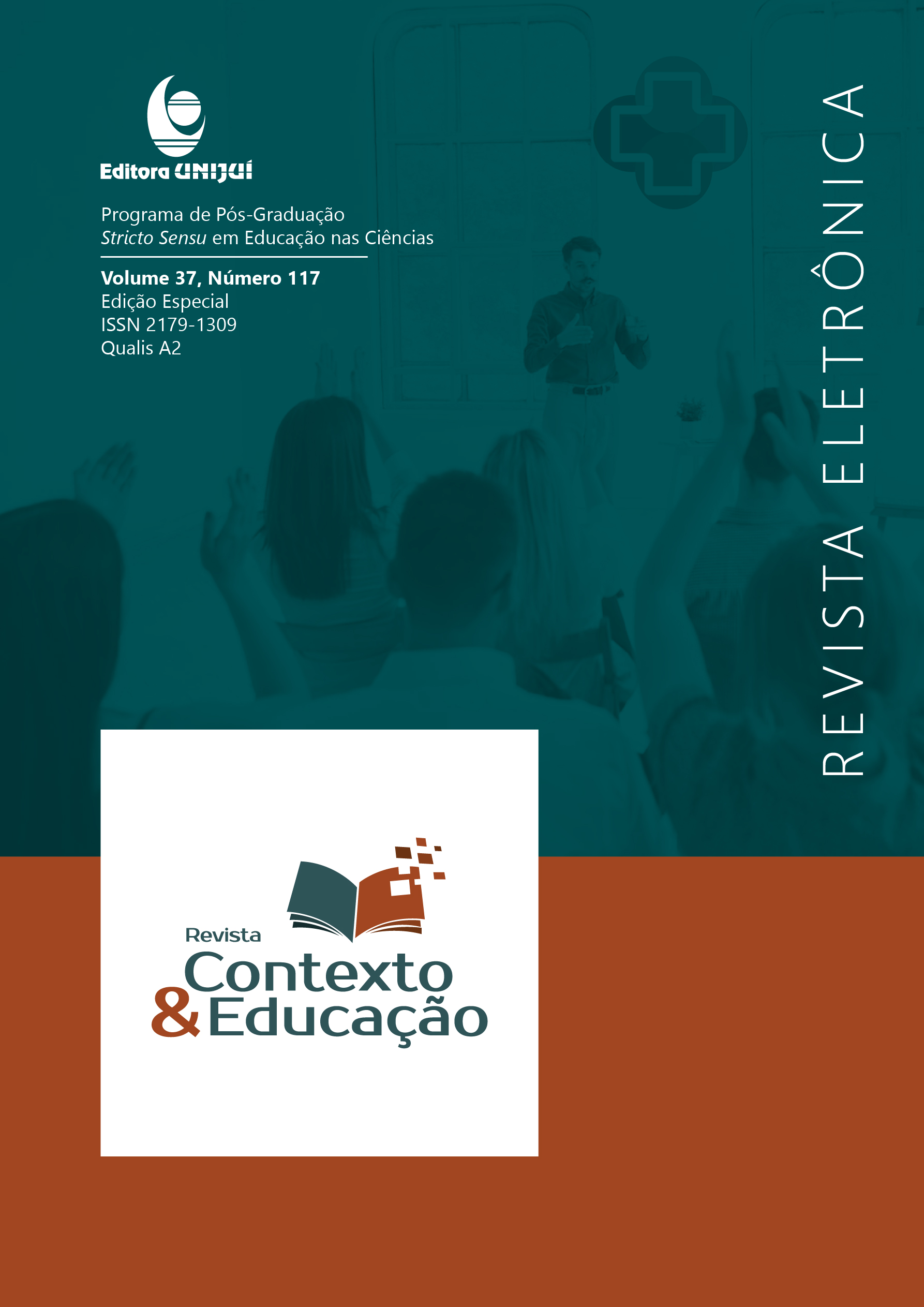QUESTÕES DE SEXUALIDADE E GÊNERO NO 1.º CICLO DO ENSINO BÁSICO: LEGITIMIDADE, MODALIDADE E TEMAS
DOI:
https://doi.org/10.21527/2179-1309.2022.117.12890Palabras clave:
Sexualidade, Gênero, 1º Ciclo do Ensino Básico, ProfessoresResumen
Neste trabalho apresentam-se os resultados preliminares de uma investigação de doutoramento sobre questões de sexualidade e gênero (SG) em meio escolar. A investigação tem como objetivo conhecer como os professores e professoras brasileiros e portugueses que atuam com crianças de 6 até 10 anos compreendem o trabalho com questões de gênero e sexualidade no meio escolar e se eles e elas se reconhecem como profissionais legitimados a tratar dessas temáticas com as crianças. Seguindo uma metodologia de investigação-ação, na fase de diagnóstico aplicou-se um questionário a professores de 1.ºCEB em Portugal. O questionário previamente validado foi aplicado on-line. Os dados obtidos foram analisados com o programa SPSS. A amostra ficou constituída por 119 professores, sendo 111 mulheres e 8 homens, com média de idades de 48,76 anos e de tempo de serviço de 23,85 anos. A maioria era casada, licenciada e nunca fez formação contínua/específica em SG. Nos resultados apresentam-se as frequências para as variáveis legitimidade/preparação, modalidade, efeitos e temas de ES. A maioria dos participantes considera ter legitimidade e preparação para abordar questões de SG, concorda que a ES deve ser transversal, contribui para a redução de estereótipos, violência e desigualdades sociais. Os temas com que mais concordam são os relacionados com o corpo (desenvolvimento, diferenças, higiene/segurança e respeito) e valorização e respeito pela diversidade. Conclui-se que apesar de não terem formação específica em ES a maioria dos professores de 1.º CEB portugueses se sente preparada e com legitimidade para abordar ES e questões de SG na escola.Neste trabalho apresentam-se os resultados preliminares de uma investigação de doutoramento sobre questões de sexualidade e gênero (SG) em meio escolar. A investigação tem como objetivo conhecer como os professores e professoras brasileiros e portugueses que atuam com crianças de 6 até 10 anos compreendem o trabalho com questões de gênero e sexualidade no meio escolar e se eles e elas se reconhecem como profissionais legitimados a tratar dessas temáticas com as crianças. Seguindo uma metodologia de investigação-ação, na fase de diagnóstico aplicou-se um questionário a professores de 1.ºCEB em Portugal. O questionário previamente validado foi aplicado on-line. Os dados obtidos foram analisados com o programa SPSS. A amostra ficou constituída por 119 professores, sendo 111 mulheres e 8 homens, com média de idades de 48,76 anos e de tempo de serviço de 23,85 anos. A maioria era casada, licenciada e nunca fez formação contínua/específica em SG. Nos resultados apresentam-se as frequências para as variáveis legitimidade/preparação, modalidade, efeitos e temas de ES. A maioria dos participantes considera ter legitimidade e preparação para abordar questões de SG, concorda que a ES deve ser transversal, contribui para a redução de estereótipos, violência e desigualdades sociais. Os temas com que mais concordam são os relacionados com o corpo (desenvolvimento, diferenças, higiene/segurança e respeito) e valorização e respeito pela diversidade. Conclui-se que apesar de não terem formação específica em ES a maioria dos professores de 1.º CEB portugueses se sente preparada e com legitimidade para abordar ES e questões de SG na escola.
Descargas
Publicado
Cómo citar
Número
Sección
Licencia
Ao publicar na Revista Contexto & Educação, os autores concordam com os seguintes termos:
Os trabalhos seguem a licença Creative Commons Atribuição 4.0 Internacional (CC BY 4.0), que permite:
Compartilhar — copiar e redistribuir o material em qualquer meio ou formato;
Adaptar — remixar, transformar e criar a partir do material para qualquer fim, inclusive comercial.
Essas permissões são irrevogáveis, desde que respeitados os seguintes termos:
Atribuição — os autores devem ser devidamente creditados, com link para a licença e indicação de eventuais alterações realizadas.
Sem restrições adicionais — não podem ser aplicadas condições legais ou tecnológicas que restrinjam o uso permitido pela licença.
Avisos:
A licença não se aplica a elementos em domínio público ou cobertos por exceções legais.
A licença não garante todos os direitos necessários para usos específicos (ex.: direitos de imagem, privacidade ou morais).
A revista não se responsabiliza pelas opiniões expressas nos artigos, que são de exclusiva responsabilidade dos autores. O Editor, com o apoio do Comitê Editorial, reserva-se o direito de sugerir ou solicitar modificações quando necessário.
Somente serão aceitos artigos científicos originais, com resultados de pesquisas de interesse que não tenham sido publicados nem submetidos simultaneamente a outro periódico com o mesmo objetivo.
A menção a marcas comerciais ou produtos específicos destina-se apenas à identificação, sem qualquer vínculo promocional por parte dos autores ou da revista.
Contrato de Licença (para artigos publicados a partir de outubro/2025): Os autores mantém os direitos autorais sobre seu artigo, e concedem a Revista Contexto & Educação o direito de primeira publicação.


